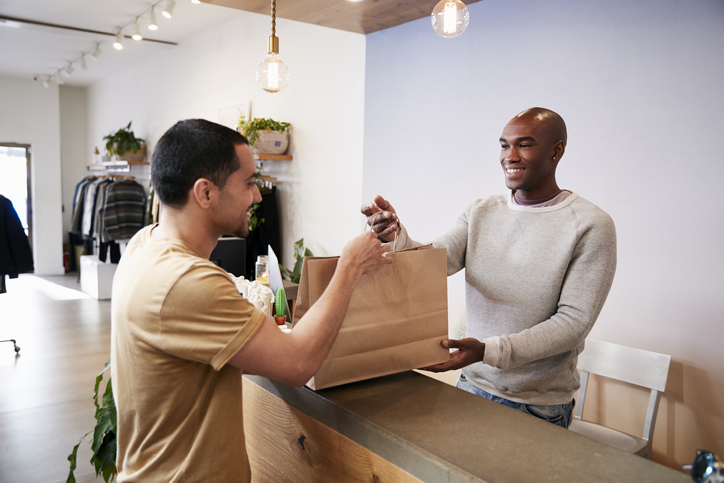Making a strong connection with your customers is key to growing your customer base and attracting loyal shoppers. So what’s the best way to do this?
Personalising their experience is the key to enhancing the customer experience. This concept isn’t new, but many retailers still miss the mark when it comes tailoring the shopping experience to their customers. If you’re currently struggling with your personalisation efforts and need some inspiration, here are six excellent examples of retail personalisation done right:
- Personalised, handwritten notes
Great retail personalisation doesn’t always have to include fancy technology. In many cases, a thoughtful gesture is more than enough to strike a personal connection with your customers. A great example of this is Chanel. A few weeks after purchasing a pair of shoes from their boutique, I received a handwritten note from the salesperson who assisted me. In it, she thanked me for shopping with her and mentioned how she enjoyed helping me find the perfect fit. She closed by saying that I could call or text if I needed anything else. See if you can do something similar in your store. Identify your best customers and send them a sincere and thoughtful note — preferably the old-fashioned way. The effort will not go unnoticed.
- Remember your customer’s size
This does include a bit of tech, but if you have a lot of repeat customers, the effort will be worth it. You can set up your online store to remember the size of your customer, based on previous shopping behaviour. The software can then pre-select the size on the product page to make the experience quicker and easier. You can also implement a similar effort in-store using a CRM system that allows you to create customer profiles. That way, if a repeat shopper walks in, you and your associates can assist them better using the information you’ve gathered previously.
- Make relevant product recommendations based on previous purchases
Do you personalise your customer emails? And no, I’m not referring to just adding someone’s name into the message. This is about tailoring each email’s content based on the recipient’s purchase history.
If you’re not doing this yet, then let this example from Sephora inspire you. Sephora sends product suggestions based on recent purchases. What’s notable about their effort is that Sephora tells the customer they used their purchase history to make recommendations. Letting the shopper know why and how you’re personalising their experience, avoids the creepy factor.
- Curate products based on needs
Many beauty brands have store associates available to help the customers find the right products for their individual skin types. By asking questions and assessing the customer in the store, products can be suggested and tested, or samples provided for the customer to try at home under natural light. This experience makes it easier for customers to make more confident and informed purchasing decisions. Many beauty counters will also create a customer profile to record colour matches and inform future purchases. Using a cloud-based POS like Vend helps retailers of any size collect this type of information easily.
- Let your customers ‘build’ products
Product personalisation is a great offering, particularly if you cater to younger consumers who value individuality. If you can do so, give your shoppers the ability to create their own products. Consider Dresden, a retailer that produces upcycled eyeglasses and sunglasses made from plastic waste and discarded fishing nets, then sells them at affordable rates. In addition to selling great products, Dresden also offers an interesting in-store experience. Unlike other eyewear retailers that sell ready-made merchandise on their shelves, Dresden lets shoppers create their own pair of eyeglasses or sunglasses. Starting from just $49, customers can get lenses and frames made up as they wait. They can choose their frame style and colour combinations, which means they can get a pair that’s crafted especially to their taste.
- Tailoring
You may not be able to let shoppers build products, but that doesn’t mean you can’t inject a bit of personalisation into their experience. If you’re a fashion retailer, consider offering tailoring services or customising apparel through stencilling, monograms, embroidery, distressing, and more. Can you think of ways to let shoppers add their personal touch to items that they’ve purchased from you? Perhaps embedding their initials or sticking on a special logo? See what’s possible and test new initiatives in your store.
Personalisation isn’t optional — it’s a must. Modern consumers expect retailers to customise their efforts based on their needs, and many shoppers will share information on their shopping preferences in exchange for personalised experiences. No matter what you sell or where your stores are located, there’s room for more personalisation in your strategy in 2019 and beyond.
By Francesca Nicasio, retail expert, Vend

